The Story of Culture and Arts
- Image resource of Korean history
- Documents from History TextBooks
- Culture & Art Stories from Korean History
- Culture & Art Stories from Korean History - Korean
- National Institute of Korean History
- History net
- About the site
- Introduce
-
Numerous topics related to Korean culture and art are mentioned in middle and high school national history textbooks, but most of them are briefly described by era, making it difficult to understand their concepts, transition processes, and characteristics.
<Culture & Art Stories from Korean History> produces and provides video materials based on expert commentary on the flow, change process, characteristics and characteristics of each major topic in the field of culture and art in Korean history.

Scenario
The pitch black soul comes alive with each added layer. Subtle shades of ocean that shift with the light. And the thousands of years’ worth of hands they have passed through. The art that stops time! Let’s take a look at the history of Korean lacquerware.
Thousands of Years in the Making - Lacquerware
Wonju, Gangwon Province. the home of Korean lacquer. When a lacquer tree is scored, sap immediately begins to trickle out. This is what we call lacquer.
“Extraction begins once the tree is fully grown in, which is from around June 1st until the end of September. It produces lacquer for four whole months and then it’s done.” Kim Buno / Lacquer Gatherer
Lacquer is a traditional Korean varnish. Once the lacquer is properly refined, it can be applied to various objects as the final step, which gives them the name “lacquerware.”
“This black lacquer is made by adding iron powder to fresh lacquer, which is then filtered with cotton a week later. We have an expression, “pitch-black lacquer.” It refers to lacquer whose color is as black as pitch or deep black.” Son Daehyun, Lacquerworker / Seoul Intangible Cultural Heritage
Besides black, red lacquer is another traditional lacquer color, in which red pigment is mixed in.
“Some benefits of lacquer are that it is pest-resistant, moisture proof, and even flame resistant. Once the lacquer hardens, the object is protected for a very long time.” Son Daehyun, Lacquerworker / Seoul Intangible Cultural Heritage
This wooden bowl from the early Iron Age has a secret to share with us today. And that secret is its lacquer. Lacquer was applied to wood, leather, ceramics, and more to increase an object’s preservability. During the Three Kingdoms period, techniques in lacquerware evolved rapidly. Wooden lacquerware decorated in splendid gold plating and leaf work was found in the tomb of Baekje’s King Muryeong.
During the Unified Silla period, a technique called “flattening” came about, wherein gold and silver patterned sheets were adhered to an object. The “flattening” technique became the basis for najeonchilgi, in which mother-of-pearl is applied.
Najeonchilgi is a type of lacquerware where thinly cut clamshells in varying shapes are pasted onto an object. The “mother-of-pearl” material, or “nacre,” is called “jagae” in native Korean.
“Nacre emits about six different brilliant colors. This variety of abalone has a reddish hue. And this one has a brilliant blue shift. It’s a very unusual color, but it’s completely natural. This color only appears in one out of every 30 shells.” Kang Sangyong, Mother-of-pearl Craftsman
The abalone’s rough exterior is ground down to a uniform thickness to become the mother-of-pearl used in najeonchilgi. Najeonchilgi has been the most prevalent style of wooden lacquerware since Goryeo period. Goryeo-period najeonchilgi was made primarily as luxury goods for the aristocracy and royalty but also Buddhist artifacts. Its fame reached far and wide, as the Chinese Sung and Liao Dynasties welcomed them as gifts.
“Some of the special features of Goryeo-period najeonchilgi include, first, its fine and detailed designs. Abalone shells are filed down to a very fine 2-3mm thickness and then arranged into delicate designs such as chrysanthemums, peonies, and chrysanthemum scrolls. Another feature is its colorful effect. The color effect is derived not only from the abalone shell but also from gold filament. All these elements, combined with complimentary red and yellow tortoise shells (daemojeon), create a splendid and stylish color effect.” Choi Youngsook, Cultural Heritage Specialist / Cultural Heritage Administration
Moving into the Joseon period, najeonchilgi was influenced by Confucianism, and once extravagant designs were now replaced with more pragmatic ones. In addition, designs such as grapevines, picturesque landscapes, and geometric patterns emerged. By the end of the 18th century, najeonchilgi was used in a variety of consumer goods.
Exquisite and Precious Brilliance – The Making of Najeonchilgi
There are only 20 najeonchilgi objects left from the Goryeo Dynasty in the entire world. After one was returned to Korea, it was put on display. The Goryeo-period lacquer box with chrysanthemum inlay. Despite measuring only 10cm long, the 2-3mm mother-of-pearl fragments forming splendid chrysanthemums and scrolls immediately catch the eye of onlookers.
The najeon craftsmanship is both exquisite and splendid.((而螺鈿之工 細密可貴) - Xuanhe fenshi gaoli tujing 宣和奉使高麗圖經 (Illustrated Records by the Chinese Ambassador to the Goryeo Court during the Xuanhe Era) by Xu Jing 徐兢, 1123
Exquisite and splendid!
Elaborate designs created by such tiny pieces is a distinct feature of Goryeo najeon. Hundreds of labor hours by a master craftsman are needed to create the intricate designs of najeonchilgi.
When creating najeonchilgi, an unlacquered wooden object is made, smoothed, then polished. Once lacquer is applied, the object is covered in a hemp cloth called a bessagae.
“Wood contracts, even if it is a hundred years old. It expands and then shrinks again. So to keep the object from distorting when it does that, we apply a bond made of lacquer tree sap and sticky rice glue.” Lee Hyungman, Mother-of-Pearl Craftsman / Important Intangible Heritage
After it has dried, another layer of lacquer is applied then left to dry, after which the design is put on. One application method is the “crease method.” The entire design is cut out first. The cutout is then put face down onto a piece of paper. An adhesive is then applied, and the design is glued on. A small iron is heated and pressed against the paper to ensure a thorough adhesion.
Another method is called the “chip method.” This is when the design is cut and adhered directly to the object.
“For the chip method, a knife is used to break off design pieces and apply them to the object. Many designs, such as the geometric turtle pattern, use this method.”
Once the design is finished and glued on, the bond beneath the mother-of-pearl is removed and another layer of lacquer is applied. Once the lacquer has dried, any lacquer stuck to the mother-of-pearl is scrapped off to expose the design.
A najeonchilgi piece is not finished until this entire painstaking, complex process is performed. It’s no wonder older generations marveled at the meticulousness and beauty of najeonchilgi.
Rightly is it called “splendid and exquisite.”
Lacquer, the essence of a tree that can endure for thousands of years. Upon which the five colors of the ocean dazzle. And the master craftsmen who have dedicated their lives to making this exquisite and splendid art!
These pieces transcend being mere handicrafts and are works of art whose colors entrance not only Korea but the whole world.
[Epilogue]
Must-Know Facts on Culture and Art in Korean History
1. Lacquer is a traditional varnish that is decay-proof, moisture-proof, pest-resistant, and flame resistant.
2. Najeonchilgi, or the placement of mother-of-pearl inlay on lacquer, is the essence of Korean lacquerware.
3. Najeonchilgi is Korea’s main traditional craft and has already been highly reputed since the Goryeo period.
Fine Arts & Crafts
18 films-
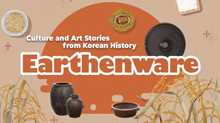 Earthenware08:28
Earthenware08:28 -
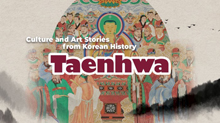 Taenghwa, or Buddhist Paintings in the Joseon Period08:36
Taenghwa, or Buddhist Paintings in the Joseon Period08:36 -
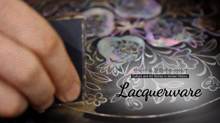 Lacquerware09:04
Lacquerware09:04 -
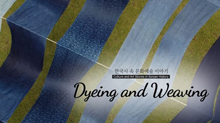 Dyeing and Weaving08:21
Dyeing and Weaving08:21 -
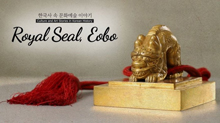 Royal Seal, Eobo07:53
Royal Seal, Eobo07:53 -
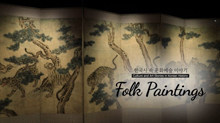 Folk paintings07:49
Folk paintings07:49 -
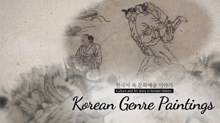 Korean Genre Paintings10:05
Korean Genre Paintings10:05 -
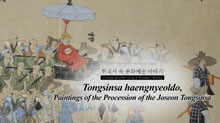 Paintings of the Procession of the Joseon Tongsinsa10:09
Paintings of the Procession of the Joseon Tongsinsa10:09 -
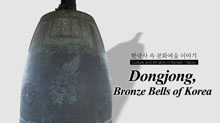 Dongjong, Bronze Bells of Korea08:50
Dongjong, Bronze Bells of Korea08:50 -
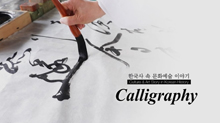 Calligraphy08:32
Calligraphy08:32 -
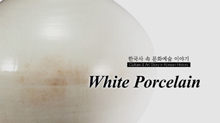 White Porcelain08:18
White Porcelain08:18 -
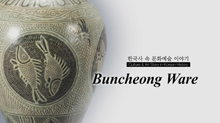 Buncheong Ware07:48
Buncheong Ware07:48 -
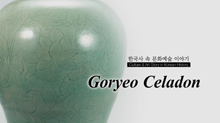 Goryeo Celadon07:54
Goryeo Celadon07:54 -
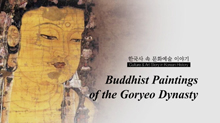 Buddhist Paintings of the Goryeo Dynasty07:57
Buddhist Paintings of the Goryeo Dynasty07:57 -
 Clay Figures, Figurines07:01
Clay Figures, Figurines07:01 -
 Clay Earthenware06:05
Clay Earthenware06:05 -
 Paintings of the Joseon Dynasty08:09
Paintings of the Joseon Dynasty08:09 -
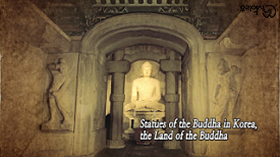 Statues of the Buddha in Korea09:03
Statues of the Buddha in Korea09:03

